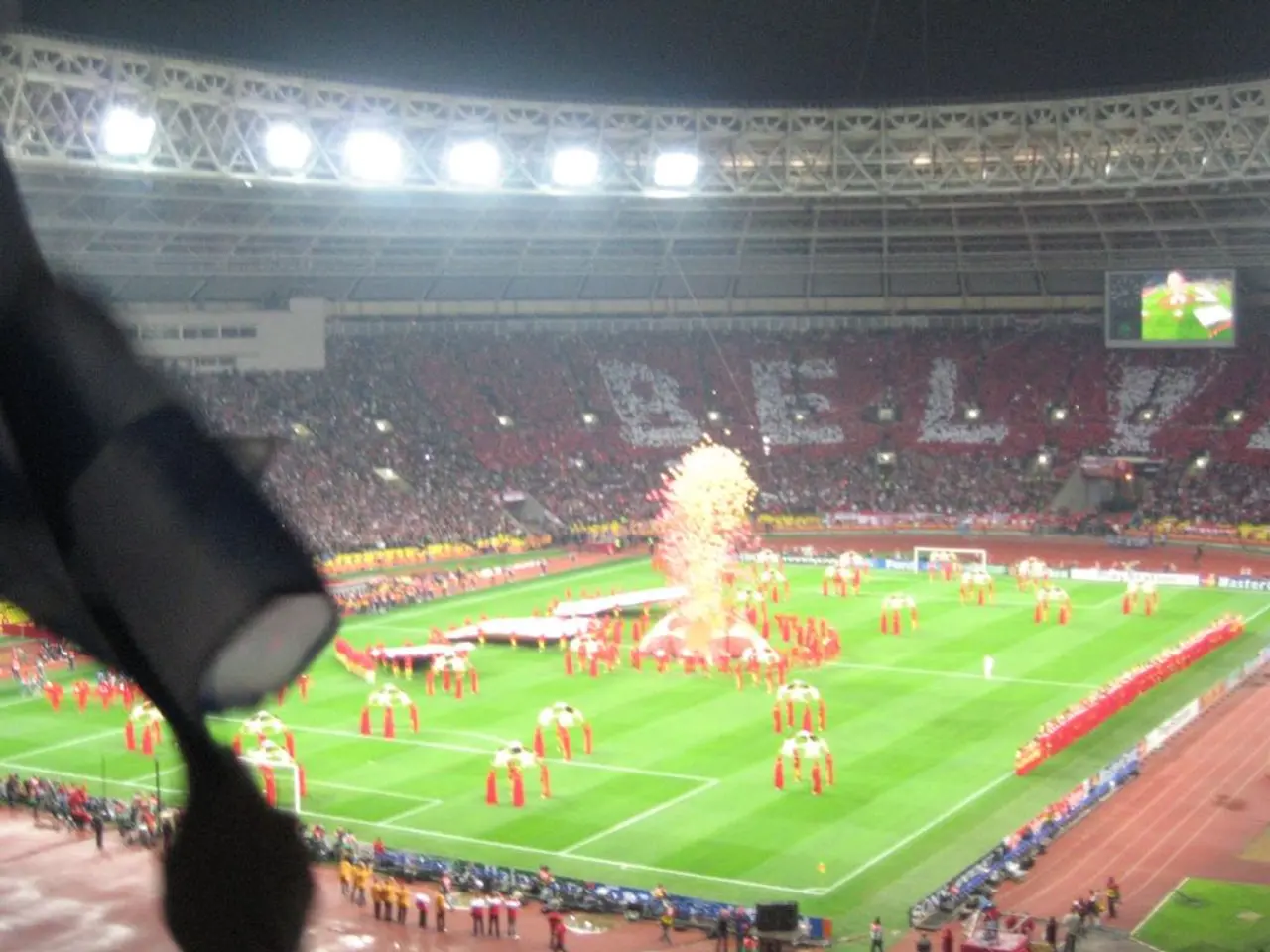International soccer tournament underscores eco-friendly stadiums and urgency for climate adaptability
In the face of the challenges posed by extreme weather and heat during the 2025 FIFA Club World Cup, FIFA is gearing up for the 2026 Men's World Cup with a comprehensive, climate-ready tournament model. The focus is on ensuring player welfare, environmental sustainability, and operational changes to create a climate-resilient event.
FIFA faces significant hurdles in ensuring climate resilience, particularly in light of the heat stress issues experienced in six of the 16 stadiums for the 2026 World Cup. Venues have faced prolonged periods above 95°F (35°C), exceeding FIFA's safety thresholds. To mitigate these risks, FIFA plans to upgrade cooling systems, improve stadium infrastructure to reduce heat exposure, and use weather-resistant materials.
Player health is another critical concern. In response, FIFA is considering strict protocols such as adjusting match timings to avoid peak heat hours, implementing mandatory cooling breaks, and developing hydration strategies. Health monitoring during matches will also be a priority to safeguard player welfare.
The 2026 World Cup is projected to be the most polluting ever, with increased matches and extensive air travel across three countries generating over 9 million tonnes of CO2 equivalent. To reduce its carbon footprint, FIFA is prioritising low-carbon transport options, promoting sustainable accommodations, and offsetting emissions.
Climate action will also be integrated at the organisational level, with a robust, transparent climate strategy addressing the entire tournament footprint. Collaboration with climate scientists, health experts, and environmental organisations will ensure adaptive planning tailored to evolving climate risks, enhancing resilience during the tournament.
Several stadiums are already leading the way in sustainability. For instance, Mercedes-Benz Stadium in Atlanta, one of the venues for the 2025 Club World Cup and the 2026 Men's World Cup, has over 4,000 rooftop solar panels, reducing its energy consumption significantly. Lincoln Financial Field, home to the Philadelphia Eagles, has converted 98% of its lighting to LED and implemented a closed-loop program for bottle caps, widespread composting, water refill stations, and efficient fixtures.
MetLife Stadium, New Jersey, which will host the final for the 2026 Men's World Cup, has implemented hybrid and electric vehicle infrastructure, onsite solar energy generation, water-saving fixtures, and recycling programs. The stadium encourages fans to get involved in sustainability efforts through carpooling, public transport, green tailgating, and choosing locally sourced foods.
Experts have urged FIFA to make proactive decisions to protect players and the integrity of the competition as climate risks intensify. The 2026 Men's World Cup, with many matches set in the same venues as the 2025 Club World Cup, offers an opportunity to rethink scheduling, strengthen sustainability commitments, and ensure climate resilience in line with FIFA's stated commitments.
In conclusion, FIFA's preparations for the 2026 Men's World Cup are focused on creating a climate-resilient event that prioritises player welfare and sustainability. By retrofitting venues for extreme heat, implementing strict health safeguards, dramatically reducing emissions and air travel reliance, and adopting an accountable, comprehensive climate strategy integrated into all tournament operations, FIFA aims to set a standard for climate-ready global sporting events.
- To address the challenges of climate change and environmental sustainability, FIFA is collaborating with climate scientists and environmental organizations to develop a robust, transparent climate strategy for the 2026 Men's World Cup.
- In addition to stadium upgrades, FIFA is exploring sports-analysis methods like weather-forecasting to mitigate risks associated with extreme weather and heat during the tournament.
- As for player health, FIFA is considering sports-betting regulations that would account for weather conditions and implement strict protocols, such as adjusting match timings, mandatory cooling breaks, and hydration strategies.
- In the field of environmental science, researchers are studying the impact of climate change on sports facilities, with a focus on adapting stadium infrastructure to create climate-resilient environments.
- In the European leagues, including the Premier League, clubs are implementing practices such as utilizing renewable energy, reducing waste, and promoting carbon offsetting initiatives as part of their commitment to sustainability.
- With climate change intensifying, experts suggest that sports organizations should make proactive decisions to mitigate its effects on players, teams, and the environment, using scientific knowledge and analytics in sports management to make informed decisions about scheduling and venue selection.




